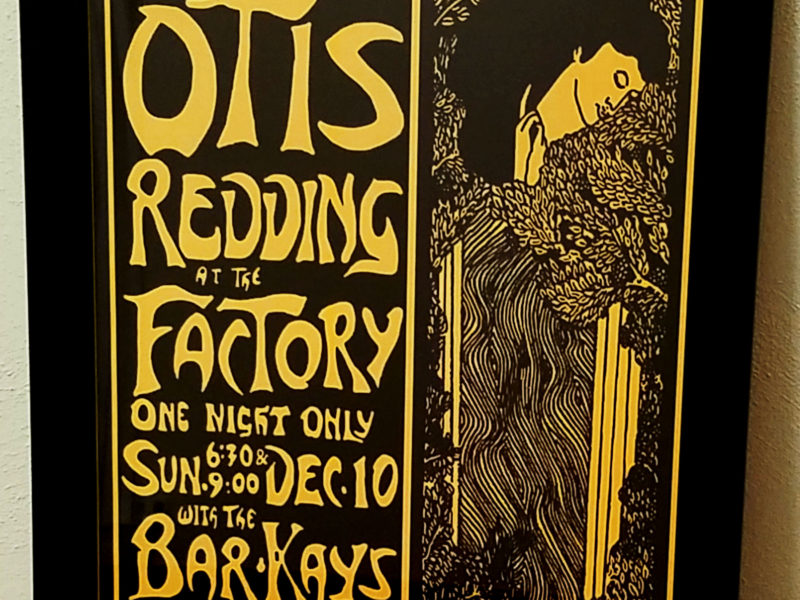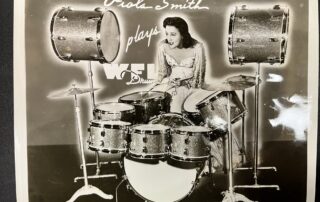Posters for concerts are a common sight around central Madison, particularly along State Street, near the UW campus and on Willy Street. They’re ephemeral, covered over quickly by new layers of promotion. In late 2007, though, a striking gig poster caught my eye in an art gallery on State Street.
It was a poster for what would become the most enduring story in Madison music history: a concert by Otis Redding that wasn’t to be. The youthful soul and R&B musician, only 26 years old, met a tragic demise when his small plane plummeted into the icy waters of Lake Monona on December 10, 1967. Redding and all but one member of his band The Bar Kays died in the crash. En route from Cleveland, they were set to play a pair of shows that night at the Factory, a long-gone venue just half a block off State Street.
It was the end of a big year for Redding. His cover “Try a Little Tenderness” was a recent hit, and he’d brought the house down at the Monterey Pop Festival in June. That summer, a cover of his song “Respect” climbed and climbed, hitting the top of the charts – indeed, Aretha Franklin’s immortal version would become one of the all-time greatest American recordings. As 1967 wound down, Redding hit the studios to record, and then the road again to perform.
I’ve always loved gig posters but the one for Redding’s stop in Madison is a particularly melancholy artifact of rock-n-roll history. Around 2 feet high and not quite as wide, the print is a single layer, black ink on blue stock for some copies, yellow for others.
Its design is divided in two vertically, with text on the left and an illustration to its right. The left side reads, “Otis Redding at the Factory: One Night Only,” providing the date, time and price along with an opener: The Grim Reapers. Macabre in hindsight, that was an early band led by Rockford’s Rick Nielsen, who would go on to fame as the frontman of Cheap Trick.
The typeface is loose and flowing, like that used for “Métropolitain” signage above Paris subway stations. The right half is a drawing of a woman blanketed in foliage and shielded by a rectangular screen of wavy, flowing lines; only her steepled hands and head with flowing black tresses visible. Near the bottom, is a single word — “Tenderness” — and a stylized broken heart.
The poster was created by William Barr, a sophomore at UW that year. He said the design was meant to be an allegory for the idea of tenderness, a woman gazing upon the wounded soul of her beloved.
The poster’s design bears a distinct resemblance to the cover of the self-titled debut album by the British prog band Procol Harum. It had been released a couple months earlier, and opened with their Summer of Love-defining hit “A Whiter Shade of Pale.” The typeface is similarly sinuous, the image likewise centered on an apparitional female figure wreathed in tightly-drawn leaves, all in black-and-white. Both evoke Art Nouveau illustrations.
About 100 posters total were printed for the show. After the crash, those that hadn’t already been claimed were. It was reprinted in 1981, and in decades since, the originals would become coveted rarities.
Only weeks after his death, Redding’s new song “(Sitting On) The Dock of the Bay” was released. The single topped the charts, ensuring his place in the pantheon of American music.
Redding’s songs endure, and while the poster for his would-be show in Wisconsin is but a footnote, it too memorializes his sound and soul.











